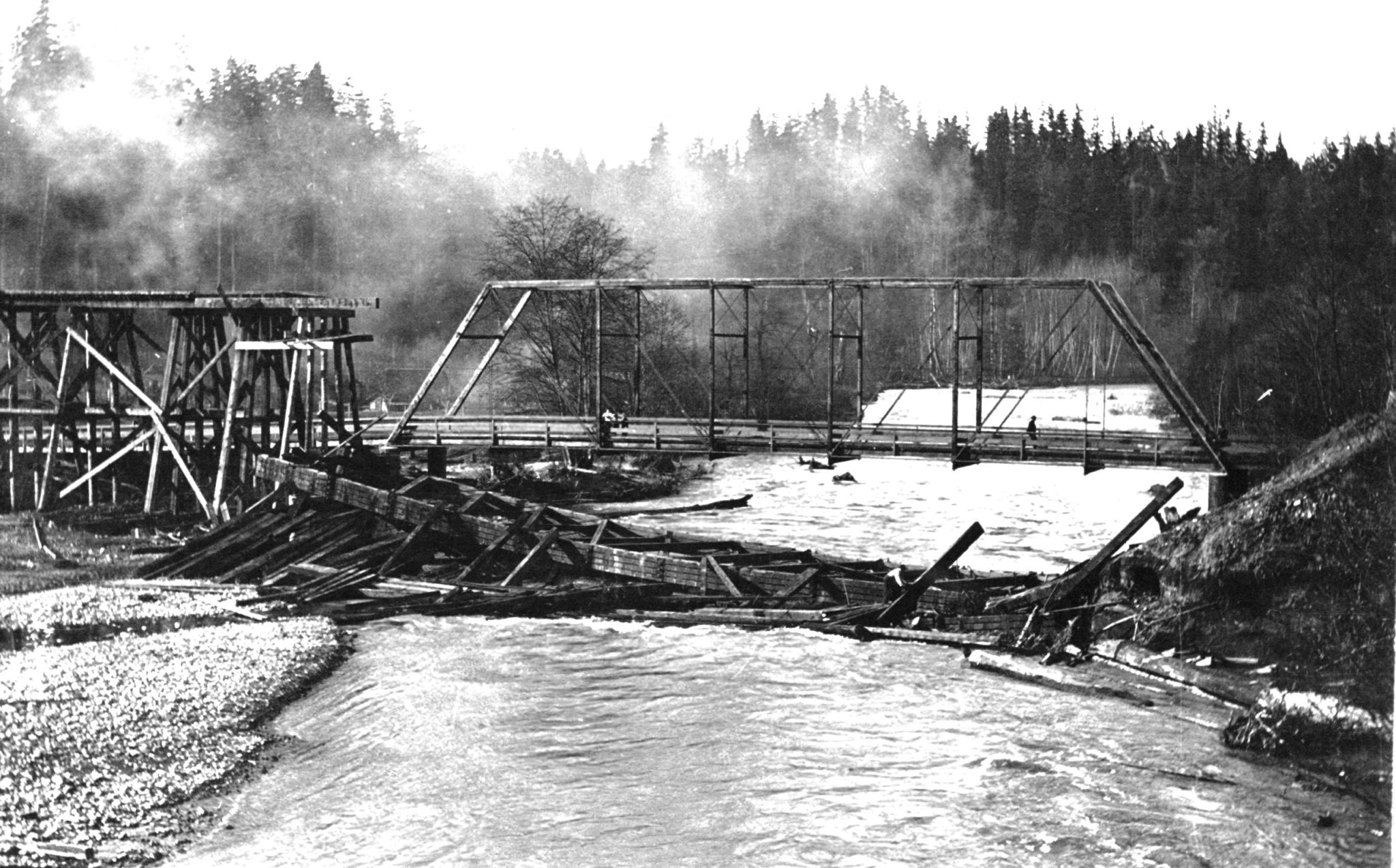Last week’s column featured the November 1911 flood which collapsed two of the three bridges crossing the Cedar River in old Maple Valley, near the site of former Testy Chef which is now Cascadia Pizza. This week we examine the Columbia & Puget Sound (C&PS) Railroad bridge shortly after crumpling into the river. A worker can be seen on the toppled debris at river level, a dangerous undertaking. To the far right the embankment of the C&PS Railroad rises. Today, a guardrail at the top of that embankment lies between Highway 169 and the bright red Cascadia Pizza building. This photo was taken from what remained of the Chicago, Milwaukee & St. Paul Railway bridge, slightly upstream. It too fell from historic flooding. Still standing in the distance is the old county road trestle bridge where Highway 169 crosses the river.
The C&PS bridge was built around 1884 when the railroad pushed south from Renton on its way to Black Diamond to serve its recently opened coal mines. Whether the original wood trestle bridge had been rebuilt in the 27 years till its 1911 collapse is unknown. However, the bridge needed to be quickly rebuilt as coal was stranded in Black Diamond and Franklin with winter fast approaching. This bridge was known as the “fourth crossing” of the Cedar River, referring to the number of times a train passed over the river traveling south from Renton. The first crossing was at Maplewood Roadside Park about a mile south of I-405; the second near 140th Way S.E.; the third by Royal Arch Park; while the fourth crossing became the heart of old Maple Valley. Just before this fourth crossing, one branch of the C&PS railroad turned east towards Taylor, while the other spanned the river continuing south past Lake Wilderness and Four Corners to Black Diamond. Today, walking and biking trails incorporate portions of the former rail beds. This photo comes courtesy of the Maple Valley Historical Society with research assistance from Dick Peacock, its President; and from JoAnne Matsumura, an Issaquah historian.







